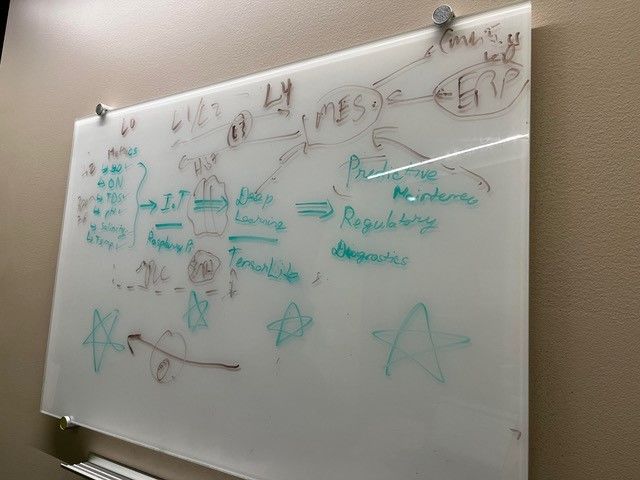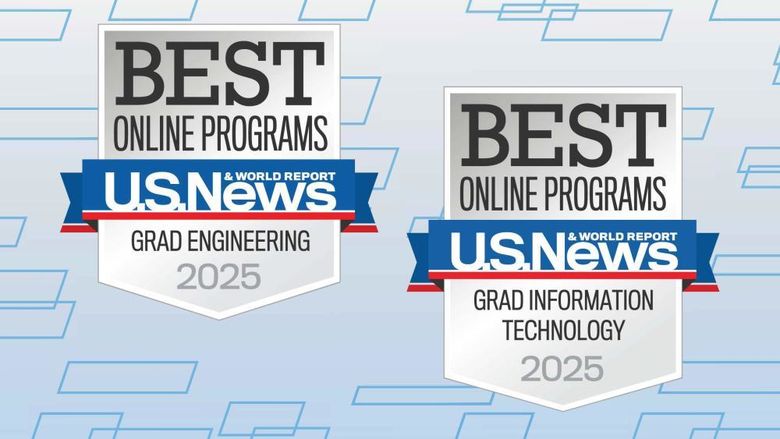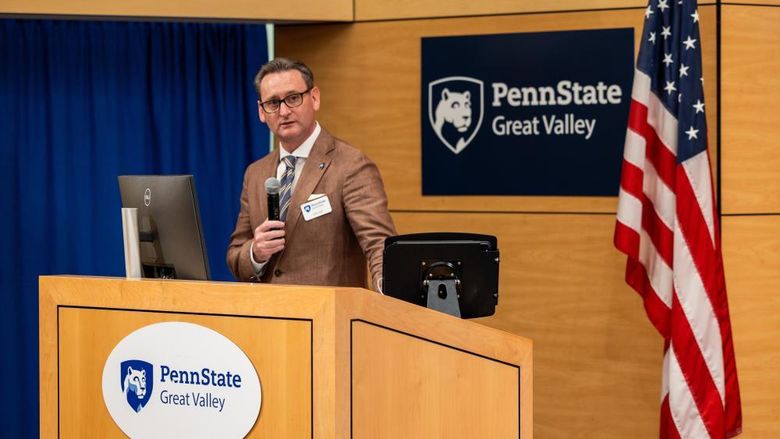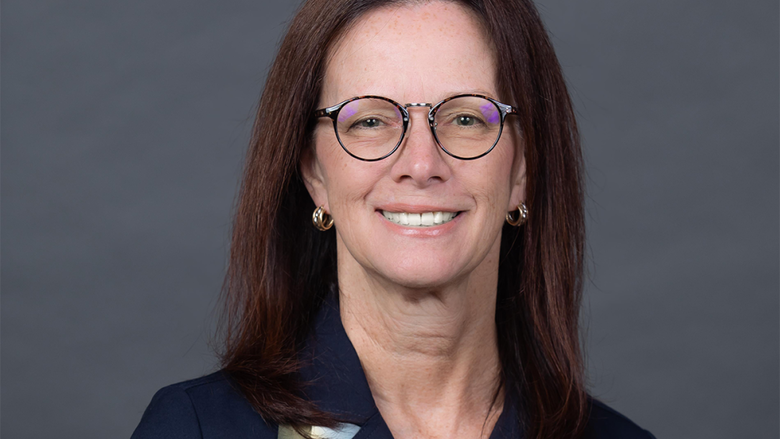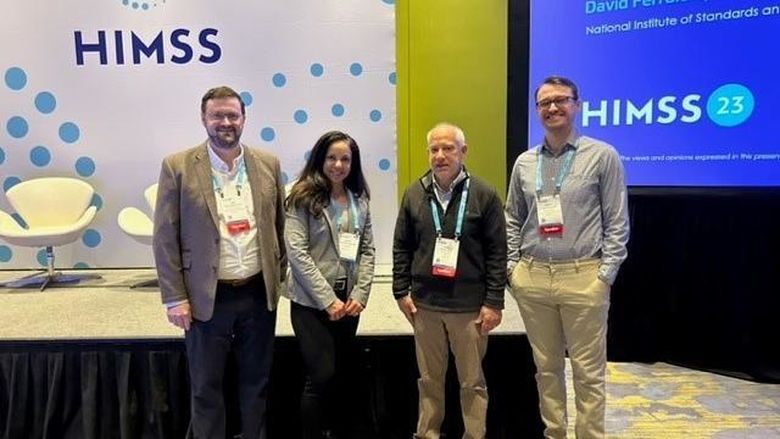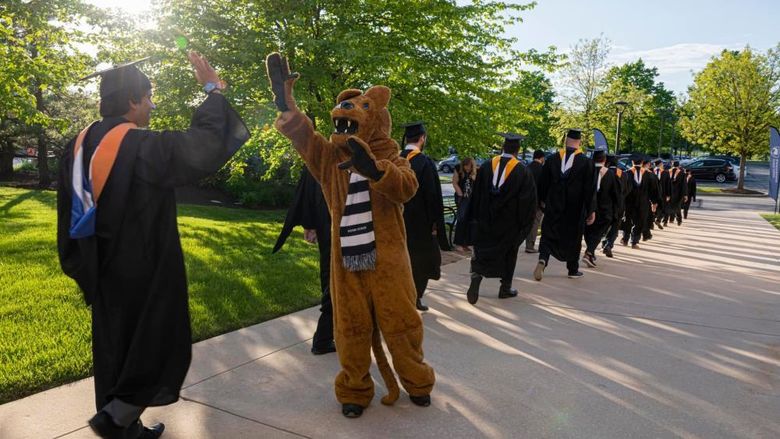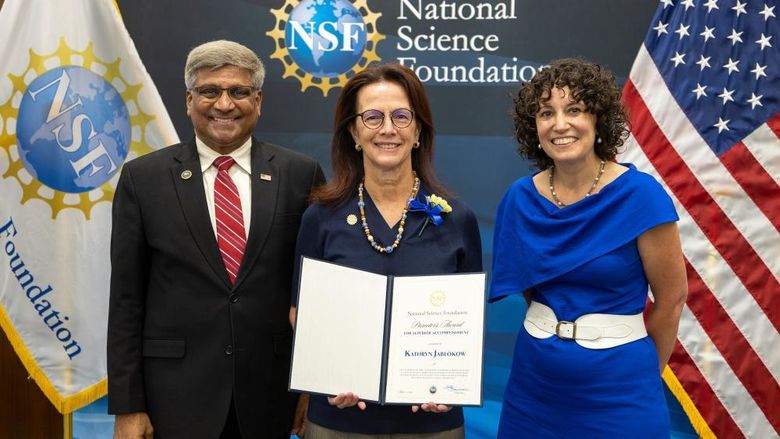MALVERN, Pa. — Opportunities to apply and expand on classroom knowledge abound for Penn State Great Valley’s graduate students. When those opportunities focus on solving pressing issues to make the world a better place, the experience can be invaluable.
For the fourth time in five years, a team of Great Valley students will compete in the final round of the Nittany AI Challenge, held on Sept. 7 at the AI for Good Expo. The challenge offers Penn State students the opportunity to try to solve real-world issues through AI and machine learning. For Master of Professional Studies in Data Analytics program students Gayatri Bangar and Jason Durrance and Master of Science in Data Analytics program student Ranojoy Deb, deciding on just one topic to tackle for the challenge was difficult.
The three met in a fall 2023 Deep Learning course taught by Professor of Data Analytics and Artificial Intelligence Youakim Badr, who has been mentoring Great Valley’s Nittany AI teams for the past five years. Since many students may be new to AI and machine learning, Badr encourages them to start brainstorming ideas early, helps them determine what's feasible and fosters opportunities for the students to explore potential ideas within his class, he said.
“My primary objective is to help students explore the potential of their ideas and guide them towards finding AI solutions,” Badr said. “Through the comprehensive courses offered in our programs, they acquire the necessary knowledge and skills in AI and machine learning. Together, we embark on a collaborative journey, leveraging the resources and opportunities available on campus to support their growth. Along the way, I provide guidance and mentorship, but, ultimately, they take the reins and make their own remarkable strides towards success. It's truly a privilege to witness their transformation and witness their brilliance shine.”
That’s how the challenge has gone for Bangar, Deb and Durrance so far. They considered more than two dozen potential projects and were leaning towards something related to oceanography and water quality. While consulting with the team, Badr made a suggestion that stuck with everyone: predicting the potability of water.
With a firm idea in mind, the team decided to call the project “Trinity” since it comprised three people with different backgrounds working at the intersection of water, AI and the Internet of Things (IoT).
A few days before the submission deadline, the Trinity team met in the campus’ Knowledge Commons to finalize their idea, writing down some key details and thoughts on a nearby whiteboard. The group forgot to erase the whiteboard when they left — hardly a detail worth mentioning under normal circumstances.
In a stroke of luck, Bill Teodecki, an engineer at Aqua America, was also in the Knowledge Commons that day and noticed the whiteboard after the group left. It struck a chord with him — it was a new, interesting idea related to what he’s worked on at Aqua and similar to what he hoped to delve into for his master’s project. So, Teodecki, a master of engineering in systems engineering and master of professional studies in data analytics student, reached out to a few professors, including Badr, for help tracking down whomever had left their ideas on the whiteboard. Badr happily connected Teodecki with the Trinity team.
“We finalized the idea on a Monday,” Deb said. “Bill picked it up right after that, so by Tuesday, we already had an industry expert with us. The submission was two days after. The way things have worked out, you can’t really say anything more than things are just falling in place one way or the other.”
To avoid any perceived conflict of interest between Penn State and Aqua America, Teodecki offered to assist the team as an industry expert. Guided by requests from the team, he facilitated access to water treatment process datasets, coordinated interviews with industry experts and created opportunities to borrow industry-grade process instrumentation for use in the minimum viable product (MVP) stage in the final round of the competition.
“I’m just thrilled that Great Valley offers this unique opportunity to meet some cross-sectional students from different educational backgrounds, as well as provides this ecosystem to nurture an idea like this,” Teodecki said. “While the classes certainly give us the skills, this gives us a unique factor outside of class to pursue a passion that ultimately could turn very fruitful for either individuals or society as a whole.”
The Trinity team’s MVP is an AI-powered device that interfaces with a custom web and smartphone application the team developed. While many other devices test one or two factors of water quality, Trinity dives deeper and captures a wide range of elements from bacterial presence to chemical parameters. Leveraging advanced machine learning algorithms, the device distinguishes between myriad microbes and extrapolates their implications on water’s drinkability.
Trinity thrives on data collection, according to the team. By partnering with Aqua, the team gathered real-world information they used to train their AI models to discern the intricacies of water quality. Their goal? Cultivating an evolving model that not only identifies what factors might trigger phenomena like algae blooms or potability failures, but also recommends remedial solutions to render water drinkable. With this approach, the model evolves and becomes more adept with all the data it processes.
“The sheer volume of data we're harnessing is monumental,” Durrance said. “Our aim is to revolutionize the way we perceive water quality, building an AI that not just identifies but also learns and adapts.”
The team realized it was ambitious but decided it would be best to collect as much data as possible to extrapolate the most important points and create their MVP. Each team member focused on a specific aspect in the months leading up to the submission deadline for the challenge’s final phase: Bangar on building the models, Deb on application development and understanding the science behind the data and Durrance on the hardware and coding.
The Trinity team, Teodecki and Badr said they all feel something special happening with the project, and not just from the technical side. Beyond the perfect mix of backgrounds and expertise, there’s also a palpable team spirit, something they hope will drive them to first place in the Nittany AI Challenge and beyond.
“The future ideas that we have for this product is something that would make change and would create an impact around it,” Bangar said. “I’m invested in it. … It’s all of us working together as a team. It has been fun since the very beginning.”
